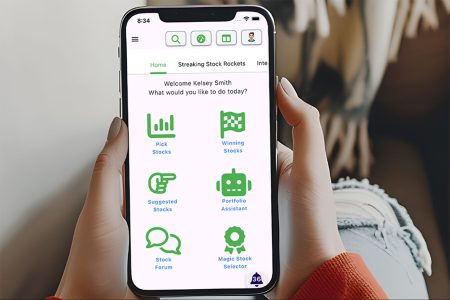Entrepreneur
Patents can be a hidden cost trap for startups. While they seem like a one-time expense, the reality is different.
Filing is just the beginning. A single U.S. patent can exceed $50,000 over its lifetime as legal fees, government fees, international filings and annuities after issuance stack up.
No wonder founders hesitate, questioning the ROI. I’ve seen it firsthand; many are skeptical and unsure if patents are worth the investment. But skipping patents altogether can be even worse:
-
A competitor files first, locking you out of your own market
-
An investor loses interest in your business, seeing no clear IP strategy
-
A legal battle hits just as your business gains traction
So, the question isn’t whether to patent, it’s how to do it without overspending.
The key is knowing where to focus your budget; trust me, that’s easier than you think. Here, I’m sharing my tried-and-tested strategies for you to patent while keeping costs in check.
Let’s dive in.
Related: Protecting Your Critical Inventions On A Tight Budget
Identify high-value innovations for patenting
Startups tend to make one of two costly mistakes with patents: over-patenting or under-patenting. Both can hurt your business.
Under-patenting happens when teams fail to document innovations. Without a structured process like Invention Disclosure Forms (IDFs), valuable ideas slip through the cracks, leaving them unprotected. The patent applications must be filed early, prior to commercialization, when funding can be tight.
Over-patenting is the opposite problem. Companies waste money filing patents that don’t actually strengthen their market position. It’s like betting on every horse instead of picking the one with the best shot at winning. Smart innovation managers focus on patents that protect revenue and block competitors most efficiently.
So, what is the best way to do that? A structured patentability assessment. An idea evaluation matrix can bring together R&D, business leaders and legal teams to assess patentability based on key factors such as business value, likelihood of patenting, expenses, etc. This comprehensive approach ensures only the strongest ideas move forward.
Here’s my rule of thumb: If losing the idea wouldn’t hurt your business, don’t patent it.
Plan your IP budgets wisely
Filing a patent without a budget is like hiring employees without knowing if you can pay them next month. It’s risky and financially irresponsible. Many startups rush into the process, only to run out of funds and abandon their applications or let issued patents lapse.
Patent costs come in phases: drafting fees, argument fees and government fees throughout the process, including after issuance. Each patent may blossom into a family of patents. This budget can blow up as foreign equivalent and follow-on continuation patents around the initial innovation. If you only budget for the initial filing, you may be forced to walk away from a patent you’ve already invested in as costs balloon.
To avoid this, set a patent budget before filing. Account for legal fees, future filings and long-term maintenance. Discuss budgets end-to-end or fixed-fee structures with your attorney to avoid surprise costs. Once your patent is in process, use cost estimation tools to track upcoming expenses and stay financially prepared.
A well-planned budget keeps your patents working for you, not against you.
Related: 4 Ways to Significantly Reduce the Cost of Obtaining New Patents and Managing IP
Use smart filing strategies to cut unnecessary costs
Let’s be honest. Many startups try to cut costs the wrong way. They rush applications with claims that are too broad (extending the argument phase) or too narrow (offering little protection), hire the cheapest attorneys or skip strategic planning altogether. They think they’re saving money, but in reality, these shortcuts lead to rejections, poor strategy and patents that fail when needed most.
A smarter way to save? Strategic filing decisions.
-
Start with a provisional patent. For just $140 in USPTO fees with legal fees being lower too, it locks in your filing date and gives you 12 extra months to refine your invention before committing to a full application.
-
Leverage government fee discounts. You can save 50-75% on USPTO fees if you qualify as a small or micro-entity. I always remind my clients to check this, as too many businesses leave money on the table.
-
Hold off on foreign filings unless there is a serious commitment to those markets. Each country can cost $5,000-$10,000 initially and ultimately $25,000-$75,000. Start in the U.S., then use the PCT system to delay international decisions for up to 30 months while assessing demand.
Another major cost driver is excessive prosecution with tough examination. I always advise clients to use predictor tools to steer clear of technology areas where getting patents is difficult.
Once assigned, check examiner analytics to understand their approval history and adjust your strategy. For instance, if you’re assigned to a tough examiner who has allowed only 1-2% of applications, consider requesting an interview to improve your chances. But if success still looks unlikely, abandoning the application early could save you from pouring money into a dead end.
Prune low-value patents to avoid unnecessary fees
I see too many startups waste 10-20% or more of their patent budget on patents that no longer serve them. If a patent isn’t protecting a key technology or providing a competitive edge, why keep paying for it?
I tell my clients to review their portfolios annually. Ask yourself: Does this patent still align with my business strategy? If not, drop it, sell it or license it to recover costs.
Also, if you’ve exited a market, stop paying to maintain patents there. Foreign filings without a business presence serve no purpose.
A lean, high-value portfolio is far more effective than a bloated one. Focus your budget on the patents that truly matter, and you’ll see real value from your IP.
No matter which one of the above approaches you take, one thing remains the same: You can’t make cost-saving patent decisions on human intuition alone. Instead, the right tools give you data-driven insights that guide smarter choices.
Related: 5 Ways to Improve Your Chances of Getting Patents
Use data, not guesswork
Smart patenting is all about making the right moves, and data helps you do just that. The right tools can assess approval likelihood, predict end-to-end patenting costs and uncover cost-saving opportunities — helping you determine which patents are truly worth pursuing and maintaining.
Performance-driven innovation managers don’t just file blindly and hope for the best — they track, analyze and adjust. If you want to win, you need to do the same.
Read the full article here









